NeXT Computer
NeXT Computer (the original 68030 cube) was a high end workstation that was manufactured between 1988 - 1990. Back then it was a very expensive machine as a complete system would start at $6500 (in 1988 dollars). The system is a 1 foot cube magnesium case with a long cable that extends to the display. At the time, its performance spared no expense, with a Motorola 68030 CPU running at a screaming 25Mhz, a dedicated floating point CPU, and a digital signal processor built into the system. NeXT cubes featured a magneto-optical drive that stored a whopping 256 Megabytes (by comparison, high end Mac systems at the time might have featured a 20 Megabyte hard drive.)
NeXT championed many technologies into the workstation arena, such as object oriented programming principles, UNIX with a refined user interface, and the ability to work with CD quality sound files. The Operating System evolved into Apple's MAC OS X, portions of which exist in the iPhone and iPad. The development language, Objective-C, the derivative of which is the programming language used for iPhone Apps. A few GUI icons from the NeXT era remain in today's Macs, such as the small camera icon displayed when performing a screen capture.
A claim to fame is that the world's first web server and browser was written by Tim Berners-Lee at CERN using a NeXT cube, marking the introduction of the World Wide Web in 1990. That same cube has been restored and a I understand it's at MIT today.
While NeXT was a technological success, it was a commercial failure (at the time), focused on the academic market with a price point that was simply too high. Ultimately however, NeXT may have been a huge commercial success, as its technical incorporation into Apple became OS X and further evolved into today's iOS platforms.
Below are a couple pictures of my NeXT Computers, one of which I restored with the original OEM paint. There remains a small community that keeps these machines alive. Less than fifty thousand were made, and I suspect far fewer function today.
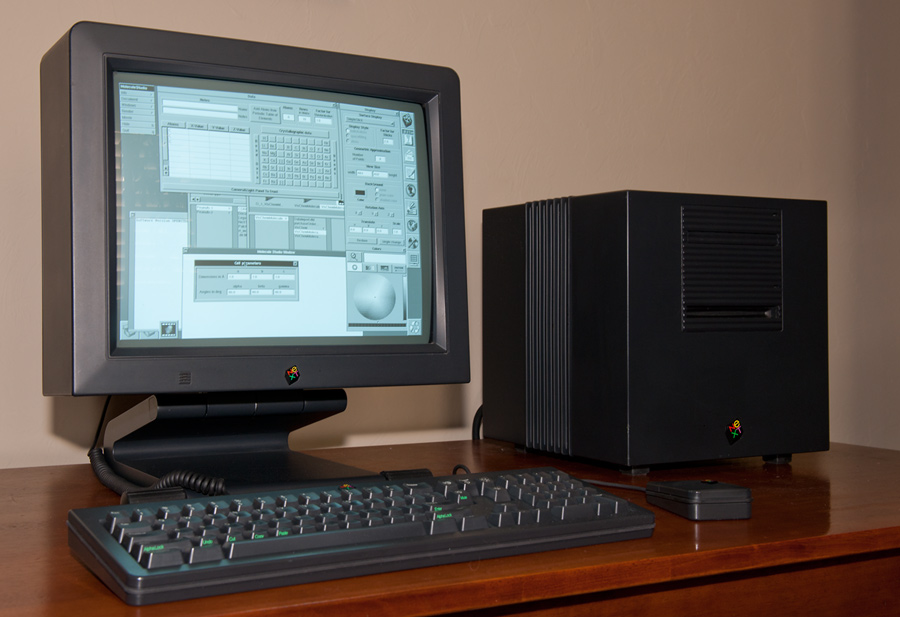
NeXT Cube Computer.
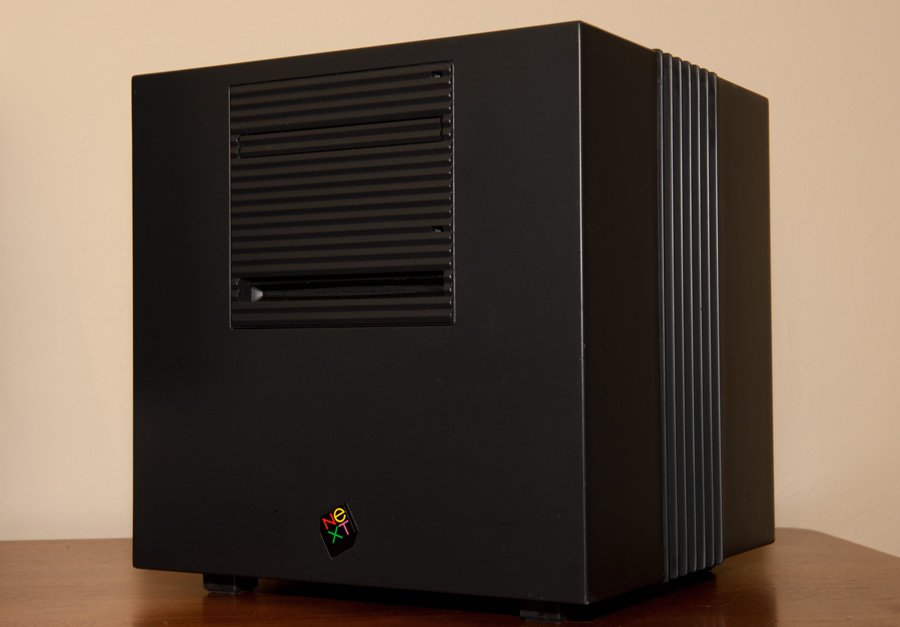
Close up of the NeXT Cube Computer.
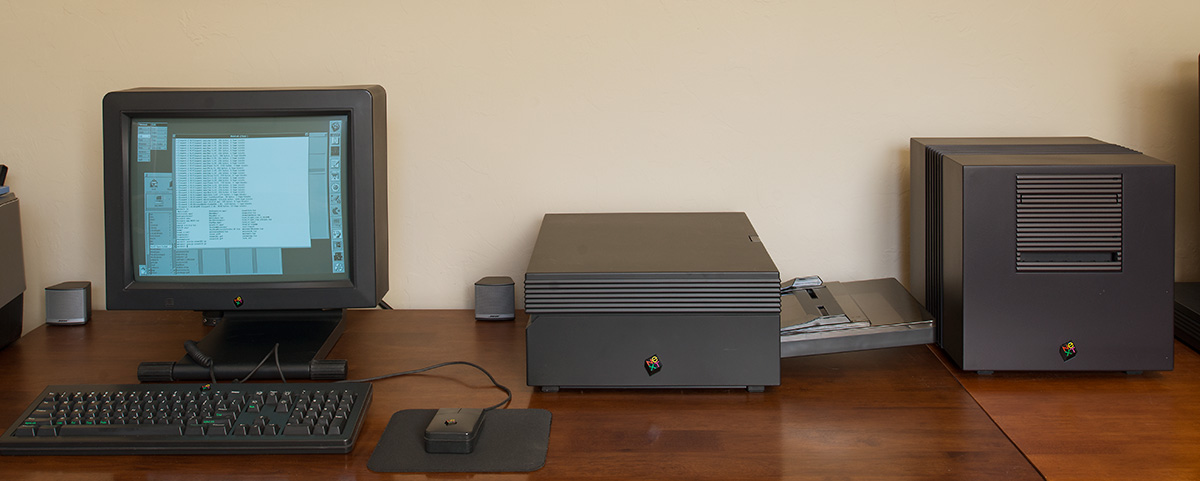
A 400 DPI NeXT Laserprinter is shown at center. The printer has minimal internal processing,
leaving the cube to perform the computing tasks associated with printing.

NeXT Cube Computer and Megapixel monitor.
A single cable from the main unit provides the monitor's power and display signal.
The keyboard and mouse plug into the monitor. This proprietary design makes
it more difficult to preserve these machines should a display, mouse or keyboard fail.
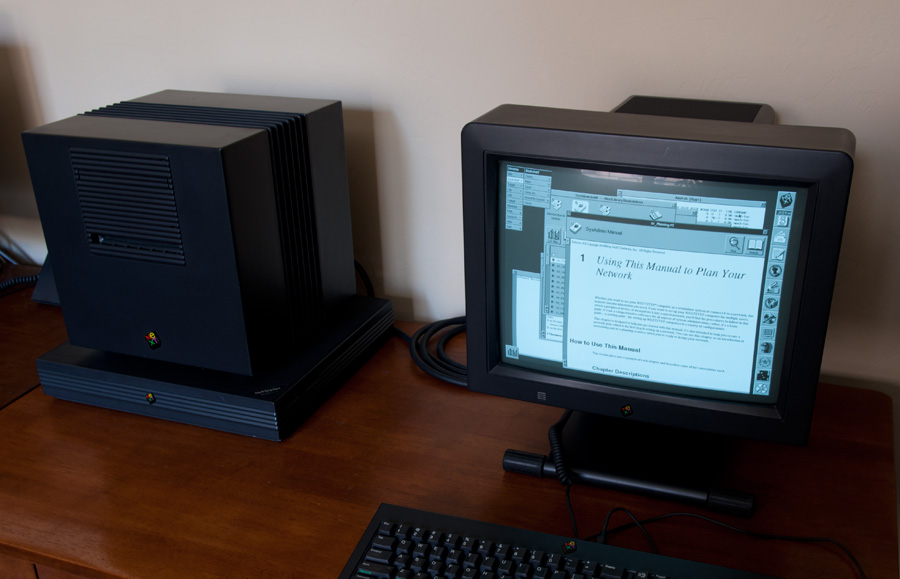
Next Cube Computer.

If you have a Mac computer, open the "Terminal" application (under Utilities) and type "ps -axl".
You will get a UNIX listing of active processes, similar to the output shown above.
This view illustrates the common UNIX heritage that remains in today's Mac computers.

Adoption by the educational market led to various science related applications.
The application dock concept on the far right, implemented ahead of its time in 1988.
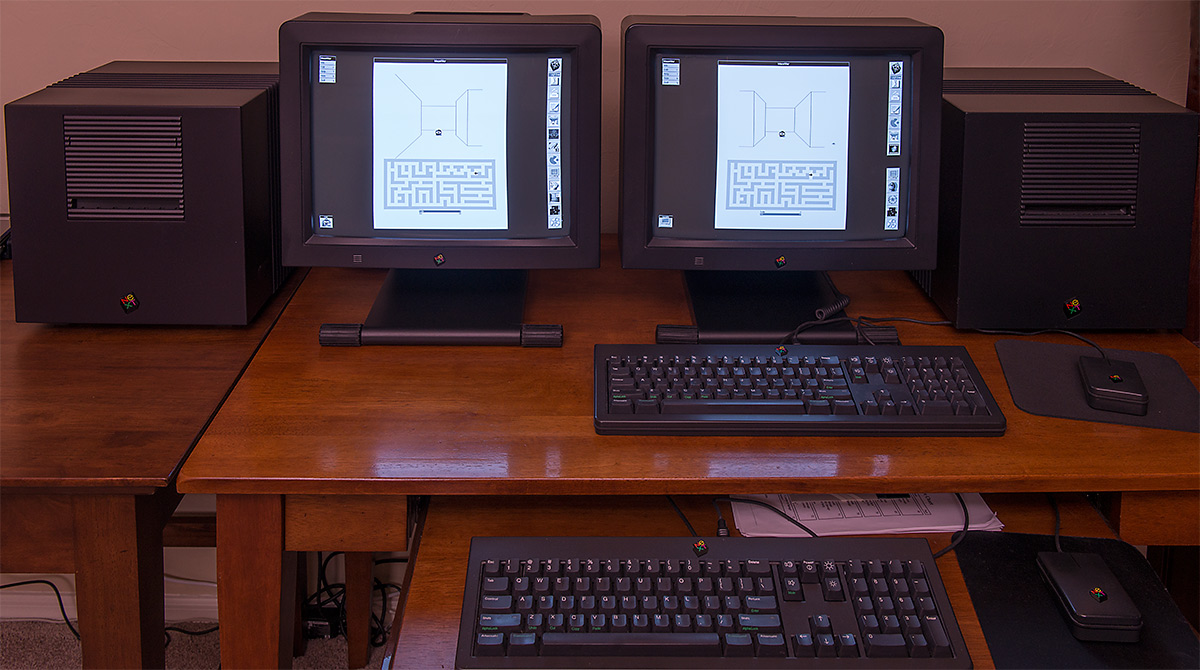
Two connected NeXT cubes running Maze War, the first networked first person role playing game.
Maze was originally implemented in 1973 at NASA on a PDS-1 computer.
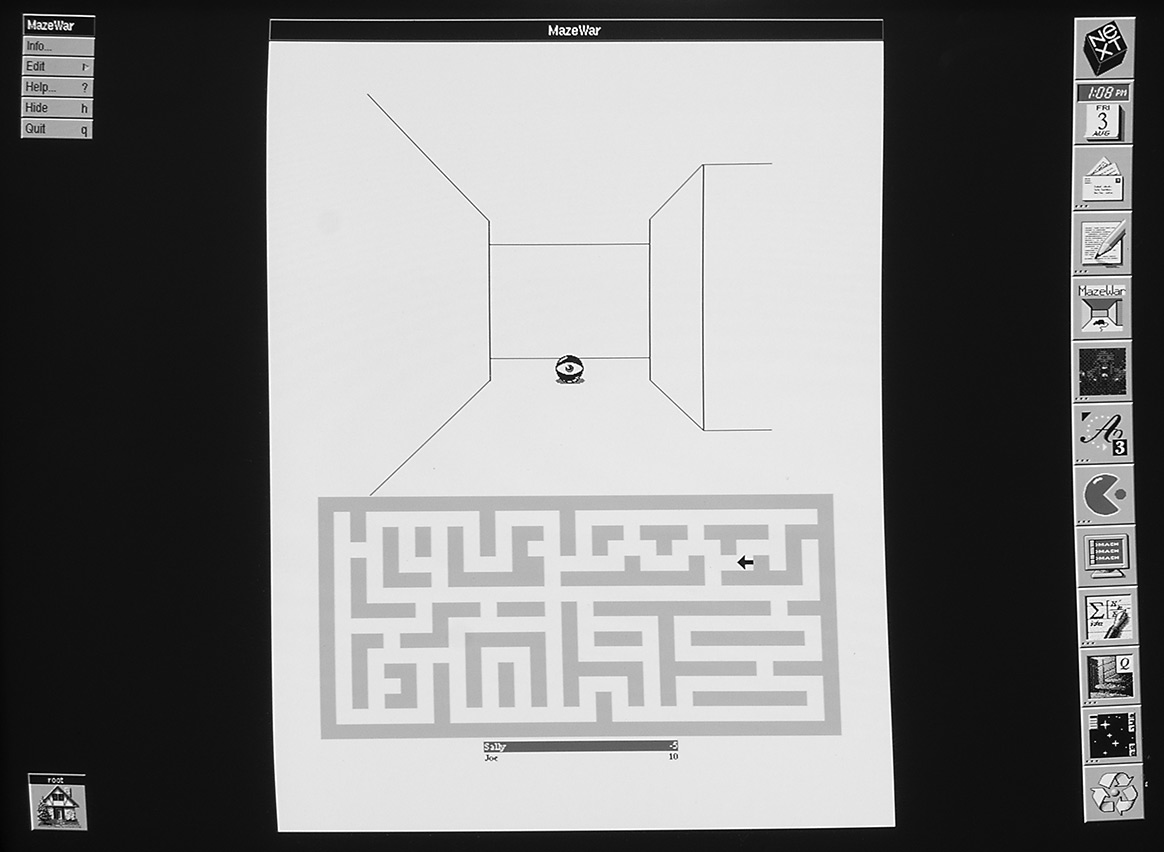
Close up of Maze War, subseqently re-written and evolved while at MIT, Xerox PARC, and here implemented on NeXT.
Opponents within the maze are represented by an eye.
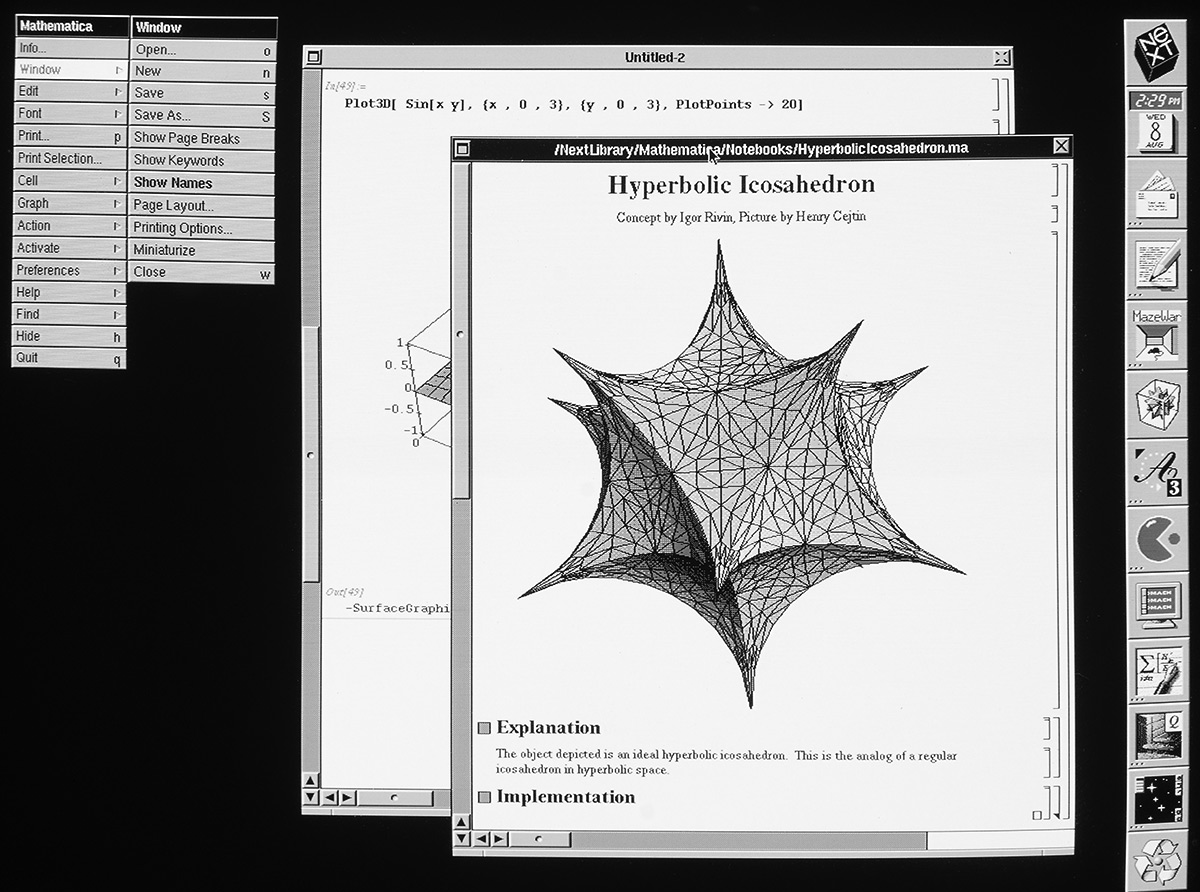
One of the most appealing scientific packages of its time, Mathematica implemented on NeXT enabled
scientists to perform advanced math and data analysis. Above, an example.
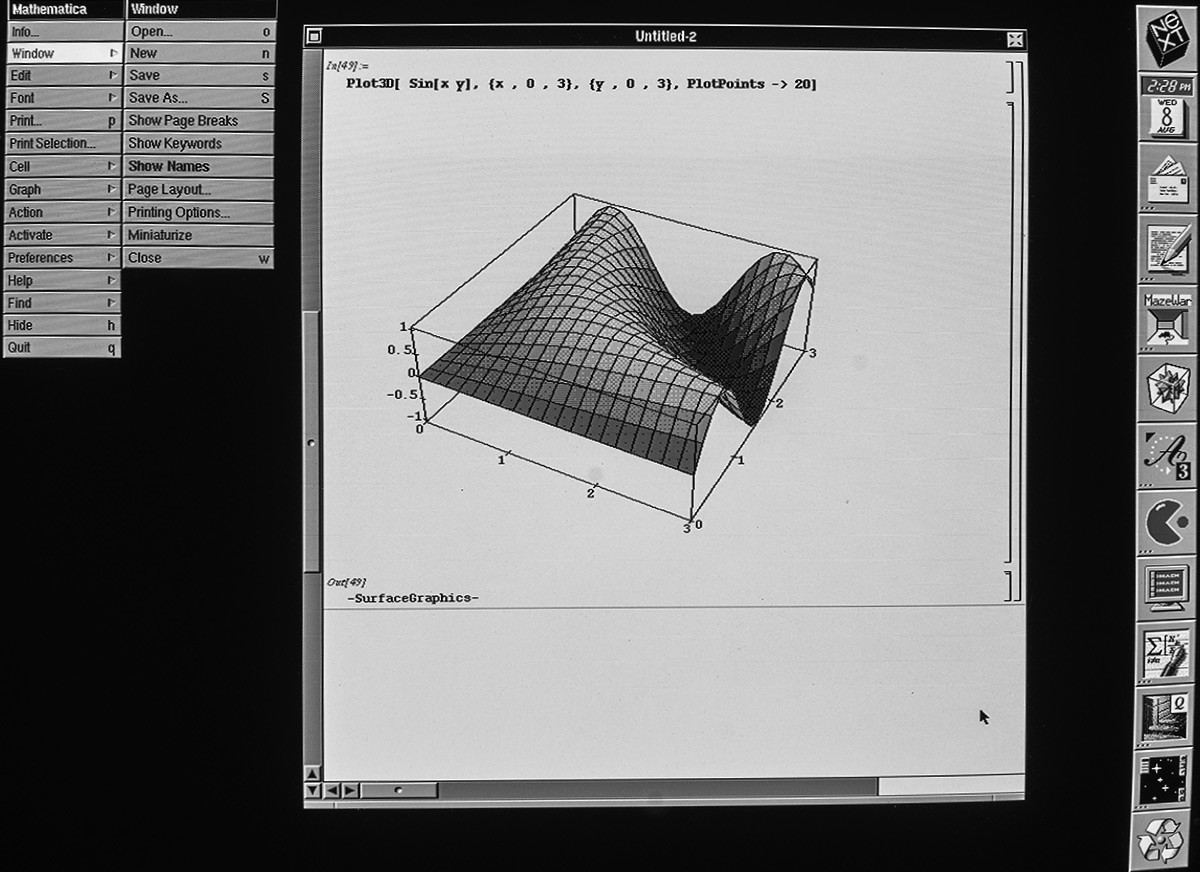
A second screen shot of Mathematica, this time, with a 3D plot command creating the wave above.
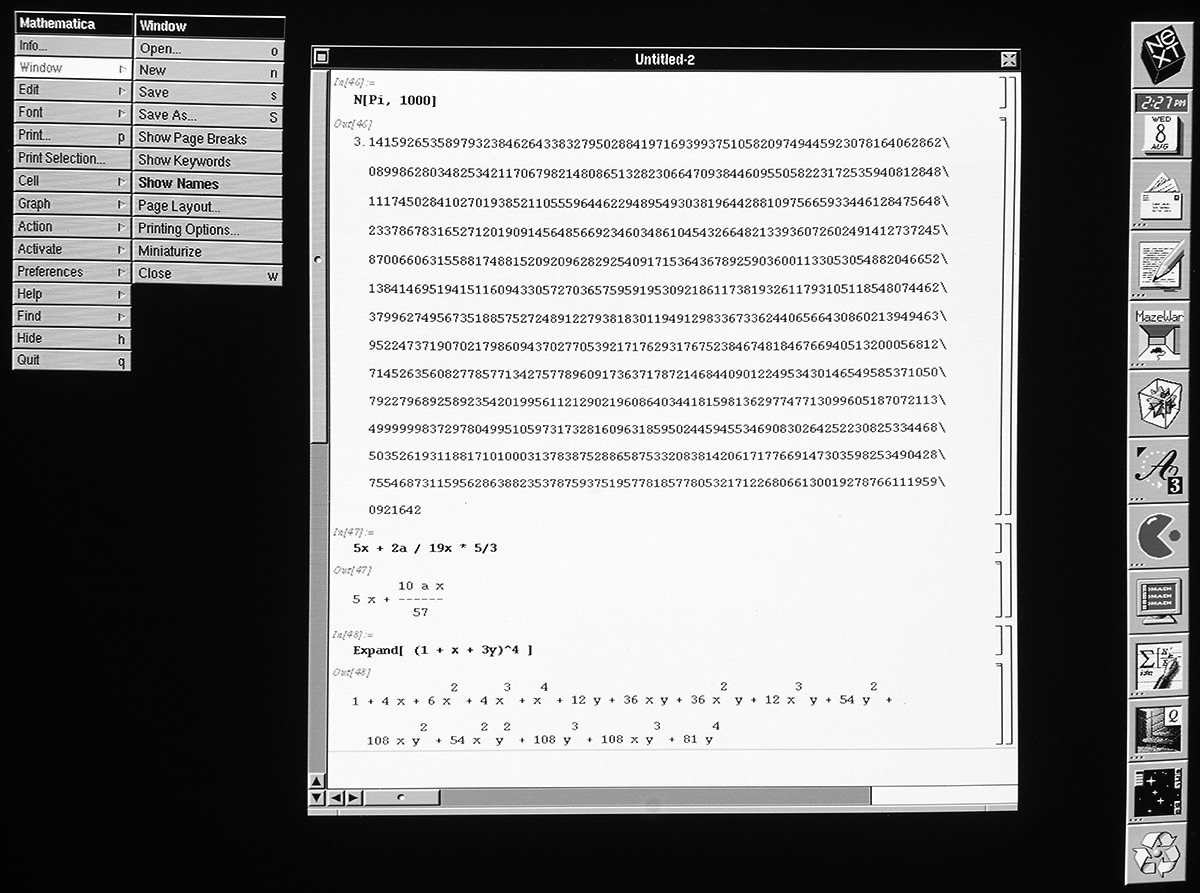
This final example shows computing Pi to 1000 digits, and two algebraic simplifications.
The user supplies inputs designed by "In[xx]" and Mathematica responds with "Out[xx]".
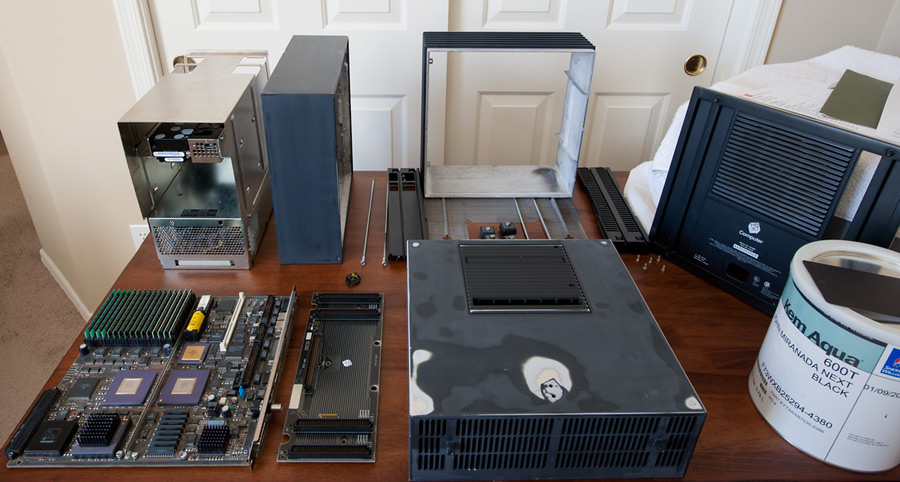
Work in process of restoring a NeXT cube, Sherwin Williams was able to mix up the original paint based
on a 20 year old part number. Sanding, priming, and painting followed. All the NeXT components are
displayed here, showing a clean and well engineered assembly, demonstrating a design asthetic that
extended to the inside of the NeXT cube computer.
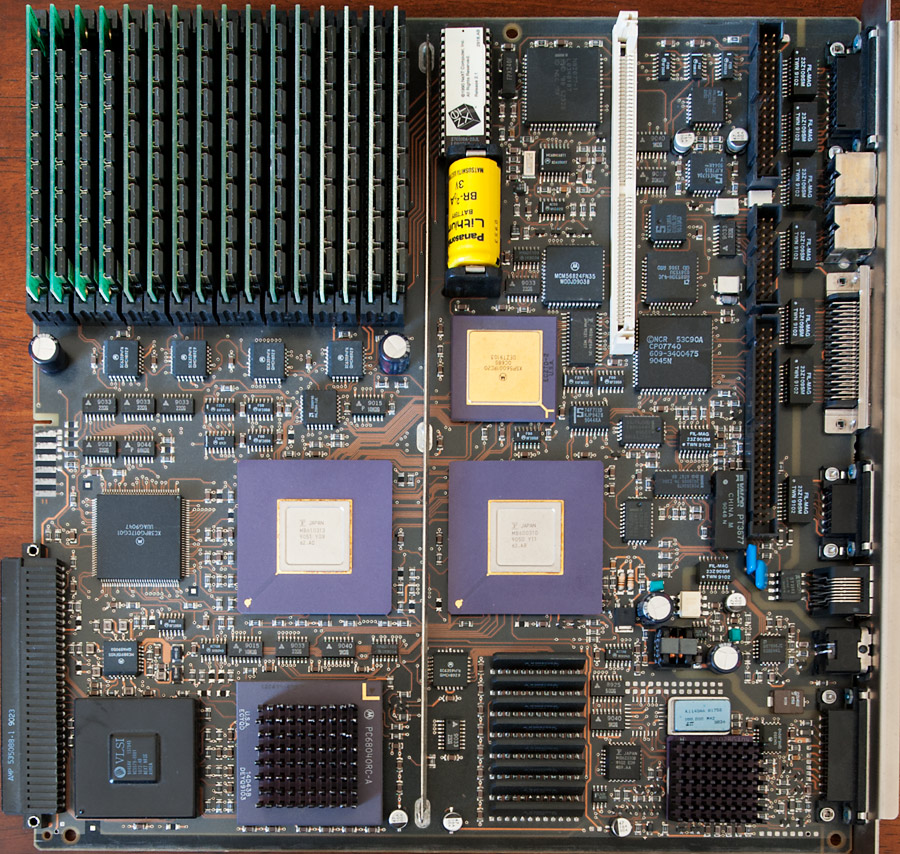
A NeXT computer 68040 processor board. It took that many chips on the top left to make 64MB of RAM.
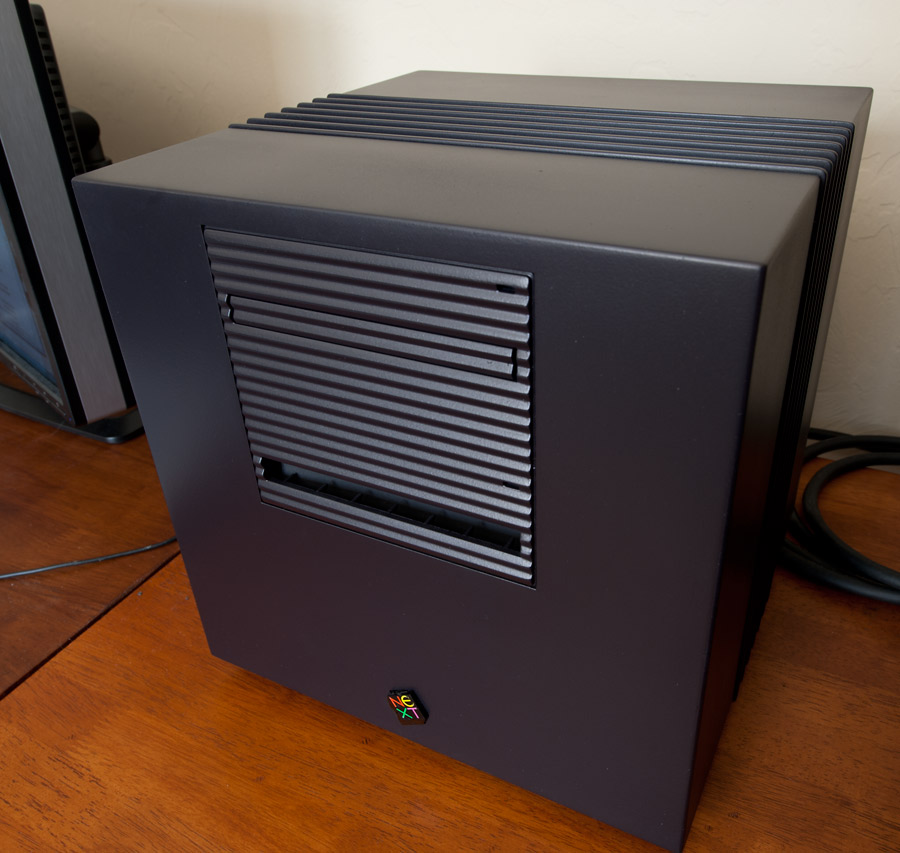
The finished product, a restored, repainted NeXT cube.
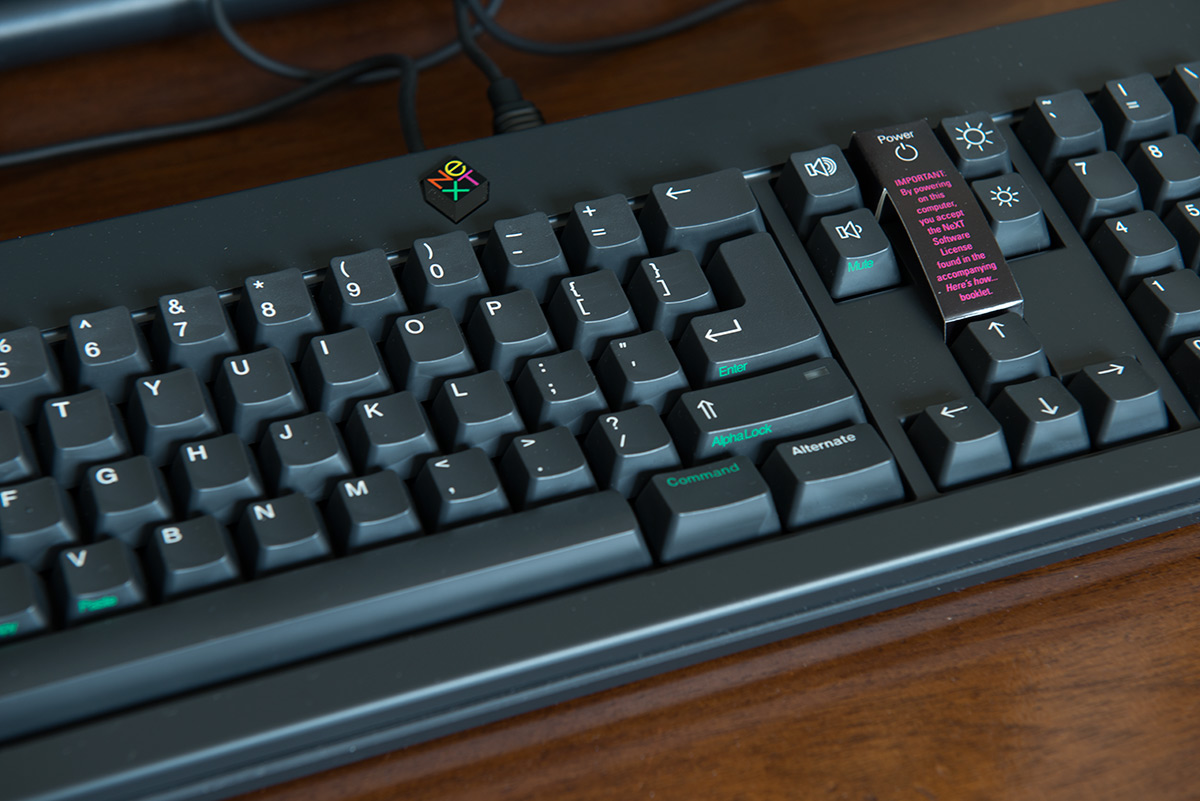
The keyboard's quality and response is better than the majority of keyboards made today. Unfortunately, the internal electronics are proprietary and not compatible with modern systems. Using an Arduino board, several hobbyists have been able to map this to a modern USB interface. I discovered this keyboard on ebay, brand new and originally delivered to Pixar, with the 1989 era license agreement wrapper still taped above the power button.
Once restored, I wanted to try a programming project on the cube, so I implemented a simple game of Chess, found here.